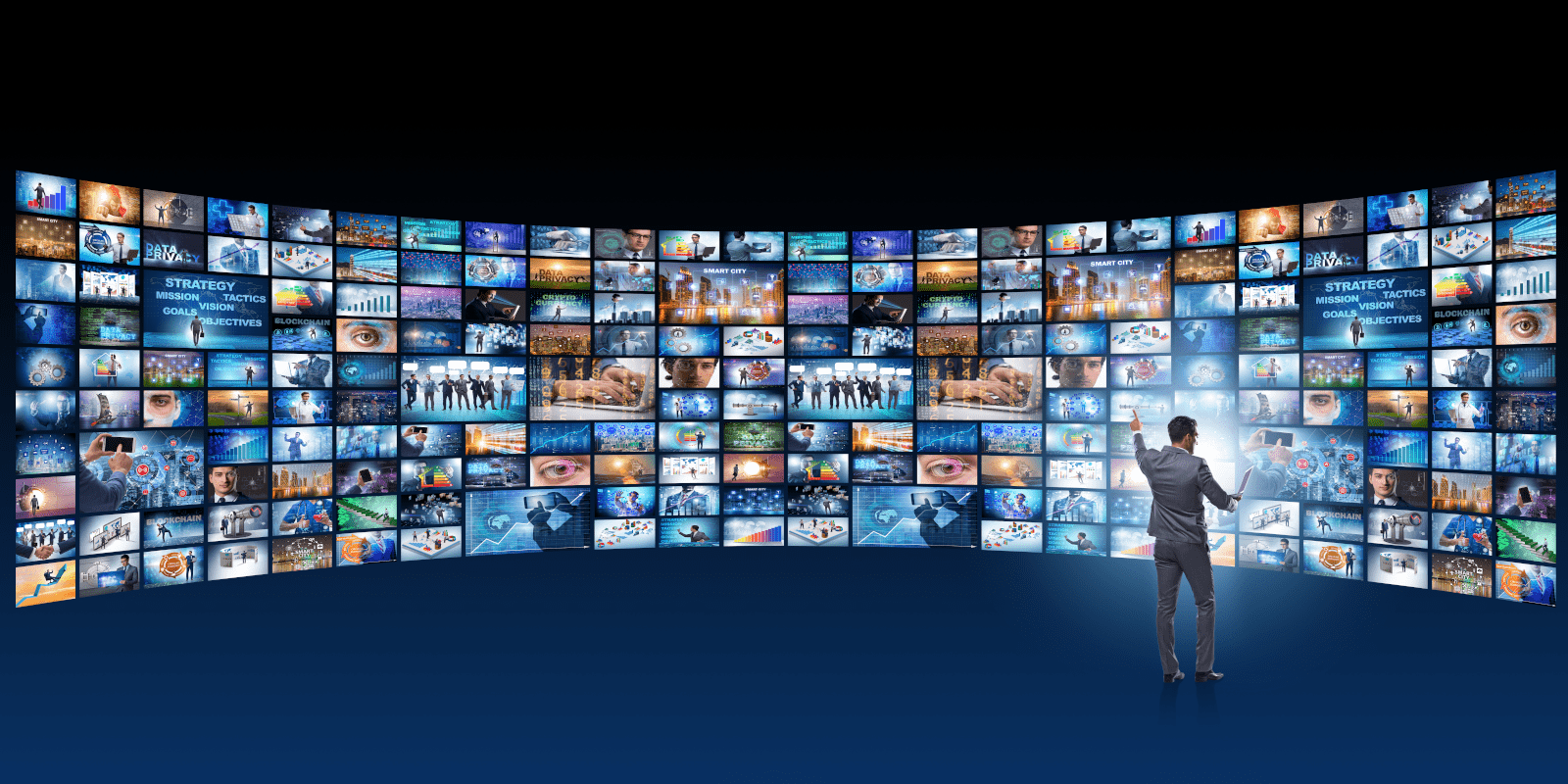New Audiovisual paradigms
Technological evolution is setting the course for each and every society sectors. One of them is audiovisuals, whether it is Corporate or Broadcast video, they are areas that are constantly adapted to technology progress.
It is more than obvious that traditional television, as we knew it, is losing more strength every day, due to the appearance of new actors, such as social networks, Apps or smartphones that reduce the time spent watching traditional television.
New digital television revolves around a central axis that is the new spectator, who becomes a modern and active subject that seeks a “revolution”, user goes from being a passive spectator to an active participant, rejecting the comfort of conventional. Traditional channels need to adapt to this new requirement, and so, they are increasingly becoming generators of quality content. Contents that should be fast and dynamic with interaction of social networks, which transmits that immediacy and closeness that new audience requests. All these changes do not imply that traditional television we know is going to disappear, but it does require an adaptation to new technological era and new active audience.

Small nuances and details are what make the difference with competition, whether it is another traditional television or one of the large entertainment corporations that are eating up screen share. In the way of transformation, having a technological partner that can provide creativity of innovation without losing focus on tradition or business continuity is a key element when it comes to transforming and being disruptive audiovisually talking, improving final product quality.
In areas such as news, content focus is very important, but transmission immediacy is equally relevant, without losing focus on both technical and plot quality, being able to generate news that is positioned above fake news, with a quality certificate is near future, perhaps it will be through technologies like BlockChain or even NFTs.
Journalists also adapt to technological changes over the years, their main job does not lose its essence, telling true news and stories in the best way, always taking into account audiovisual style and language of the chain. The “tedious, repetitive and heavy work” is becoming carried out by machines, which is where Artificial Intelligence comes in, which supports and improves television workflows. A machine can never replace a human but rather support them and simplify or improve their way of working.
Now all or almost all televisions are digital, with non-linear streams in high definition and looking sidewais at new video formats and qualities.
Parallel to digitalization, we find clear trends such as fiber connectivity and IP video transmission technology (IP Video Broadcast) that replaces conventional coaxial cabling, a previous step to reach 4K, in addition to shared work in the cloud together with hyperconvergence and Artificial Intelligence, which is increasingly available on television.

Workflow as a key element of efficiency and success of technical projects.
An aspect that has great relevance in execution of an apparently more technical engineering project is the workflow, it is not simply about installing some boxes or machines, but ensuring that these systems and equipment are used in the best possible way on the end customer part, television and its users. This work requires extensive knowledge of tools, technique, but also operational part, functional part and even user psychology. No project is the same as the previous one, “copy paste” is never fulfilled, otherwise each project always requires an important layer of ingenuity, engineering, creativity and knowledge to be able to create a suit tailored to client. At Telefónica Servicios Audiovisuales we have been the Atelier reference for our clients for many years, seeking efficiency beyond pure technical, worrying together with our clients about operational elements and improvements in workflow efficiency, seeking to be a true Technological Partner that you can trust.
A good Workflow analysis seeks to avoid cracks, detect problems and implement relevant improvements. With the workflow, the aim is to improve efficiency and productivity.
Some examples of technical solutions that we can evaluate in improving workflow efficiency are:
- Remote work.
- Automation.
- Operational synergy.
- Multi-device and multi-system production station.
- Multisystem interoperability.
- Job sharing.
- Software and Storage as a service.
- Hyperconvergence.
- Software as a service.
Training is another key point to take into account to achieve efficiency in work flows, whether the client’s own trainers are trained, or if a training plan is developed for entire staff, knowledge of tools and how best to use them in one of most important and relevant objectives.
Technical area training is key and must be appropriate for each television, as well as its maintenance and support, this generates confidence in user. Technician often solves operational problems through experience and knowledge of heart of a system.
Engineering of choice
The correct choice of “machines” is something that falls more on engineering and technical part, but it is very relevant to know well user profile, both technical, operational and creative, to be able to select “model brand” improvement, making an analogy, we can say that all smartphones work and “serve” but there are users who prefer Android over iPhone or vice versa, because their price, efficiency or their perception of quality and usability is better one compared to the other. For an end user this is something to value and introduce into technological renewal cocktail or disruption, in an ideal world (which will arrive one day not too far away), a television would not have to be forced to use all Android or all iPhone, but rather it will have all brands and models perfectly integrated and interconnected in an agile and efficient workflow.
Digital journalism evolution
News writing is also influenced by technological evolution, since different tools are incorporated for any media during writing process, from planning to publication and archiving, including image capture, editing and presentation. Among these tools we find:
- Alert, pre-alert and monitoring systems for journalists (smartphones as a complementary and essential element).
- New technologies for capture systems (permanently connected cameras using 4G and 5G networks) and image transport.
- Support systems for journalists in the first phases of writing.
- New production systems.
- New technologies in publication phase (on the Internet, personalization of content and experience and incorporation of social networks).
- Indexing (use of Artificial Intelligence) and archiving (cloud work).
Artificial Intelligence: disruptive technology
One of main technological trends that has appeared in recent times is Artificial Intelligence, a resource so innovative and with such potential that it adapts to any area that requires it. An element that performs tasks and tasks typical of human beings, increasingly complex due to its learning capacity through Machine Learning (the way in which people show machines our knowledge to perform our routine tasks).
Within Artificial Intelligence applications for audiovisual and Broadcast industry, we find content indexing and cataloging, metadata generation, facial recognition, objects detection or segmentation, or placing their work capacity at same level as an expert.

Constant evolution of television technology places us in a simple and yet complex panorama. Technological progress helps us in all tasks we have to undertake, but if we do not advance at same time as this evolution or stop adapting to each moment, we will quickly fall into obsolescence, allowing others to achieve goals that we would be incapable of achieving.
Trends to keep on your radar
As we have already mentioned, Artificial Intelligence, Big Data, Analytics, Metadata, BlockChain, NFTs and even Metaverse, are trends that are being implemented more or less quickly but that are undoubtedly stalking audiovisual market. It is not yet clear when, but in modern times we live in, implementation must be agile and very fast, trends that years ago were adopted in decades are now injected into society in months.
Asier Anitua Valluerca
Gerente Desarrollo de Negocio
Telefónica Servicios Audiovisuales